In the era of the 4.0 industrial revolution, increasing investment in facilities and modern teaching and learning facilities in vocational education institutions (VET) contributes to training a highly skilled workforce, meeting the requirements of economic development in the current context of international economic integration.
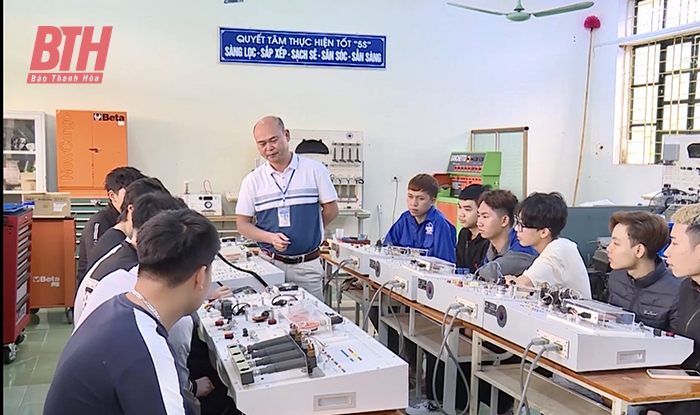
In 2022, Thanh Hoa Agricultural College was allocated 437 million VND to support investment in facilities and equipment from the National Target Program on Sustainable Poverty Reduction to improve training quality and participate in training for the poor, ethnic minorities and rural workers. Accordingly, the school has actively coordinated with districts in the province, especially mountainous districts, to implement vocational training according to national target programs for the period 2021-2025 (new rural construction; sustainable poverty reduction; socio-economic development in ethnic minority and mountainous areas). In addition, Thanh Hoa Agricultural College also focuses on research, manufacturing, investment and procurement of machinery and equipment to help students have access to modern machinery during class hours. In the Faculty of Electrical Engineering, Industrial Electricity, in addition to standard practice rooms, there are also multi-purpose practice classrooms, where students can read and analyze industrial and civil electrical installation design drawings; install, operate, inspect, calibrate, maintain and repair power supply systems, power distribution cabinets, electrical machines and electrical equipment in factories and enterprises. Thereby, helping students easily acquire knowledge and apply it in practice...
Aiming at the goal of building a smart vocational training environment, contributing to improving the quality of human resources, Thanh Hoa Industrial College has invested in laboratory equipment for information technology, software to support training, learning, and management at the school under the Project "Electronic Government and Smart Services" with an amount of 12.5 billion VND. After a period of use, the simulation classroom of the Faculty of Technology has promoted its function well, supporting the teaching process of lecturers and students in the faculty. With smart devices, lecturers can digitize lectures, simulate knowledge about cars on computers, helping students to easily understand, absorb and practice observation skills, practice simulation, programming. At the same time, it limits errors when practicing on real models... Currently, most of the specialized departments in the school have their own software systems for management and teaching.
According to statistics from the Department of Labor, War Invalids and Social Affairs, the province currently has 66 vocational training institutions, including 11 colleges, 15 secondary schools, and 31 vocational training centers. In recent years, many vocational training institutions have really focused on training quality, gradually striving to become high-quality training institutions, linked to the needs of businesses, contributing significantly to improving the quality of human resources. Therefore, the number of people registering to participate in vocational training is increasing; the rate of graduates from colleges, secondary schools, and vocational training centers with high employment and stable income. The policy of socialization of vocational training has been developed, diversifying the types and levels of training. In particular, target programs and annual projects from the central and local budgets have brought practical results to the vocational training institutions that benefit from them, contributing to equipping them with more modern and advanced machinery and equipment to meet social needs in vocational training, bringing the training quality of key industries and occupations to quickly reach the national and ASEAN regional standards of vocational skills.
Specifically: In the period of 2016-2020, the central budget supported investment in facilities, training equipment, quality assessment of vocational training institutions, and assessment of training programs from the target program of vocational training - employment and occupational safety for 5 schools, with a total budget of 37 billion VND, of which investment in facilities is 2 billion VND, purchase of training equipment is 34,725 billion VND, assessment of quality of vocational training institutions is 170 million VND, assessment of training programs is 105 million VND... From 2021 to present, vocational training institutions have been effectively implementing projects and sub-projects under the Program for economic and social recovery and development and national target programs with a total investment from the central budget reaching over 169.41 million VND, including: Project "Investment in construction and completion of facilities of Thanh Hoa Industrial College" with a total investment of 70 million VND. billion VND; support funding for the implementation of the sub-project of the National Target Program on Sustainable Poverty Reduction for the period 2021-2025 for Nghi Son Vocational College with a total investment of 57.5 billion VND and Nga Son Vocational College with over 41.91 billion VND...
However, in reality, the mobilization of investment resources for vocational education has not yet met the development requirements in the new context. In addition, although the State budget for vocational education has increased in recent years, it has not yet met the requirements and is not commensurate with the set goals and tasks; many localities have not prioritized investment resources for vocational education development; many vocational schools lack equipment and high technology in practice, so the training quality is still not high.
Pursuant to Decision No. 2239/QD-TTg dated December 30, 2021 of the Prime Minister approving the Vocational Education Development Strategy for the 2021-2030 period, with a vision to 2045, the Provincial People's Committee has issued Plan No. 136/KH-UBND on deploying and implementing the strategy in the province. With the goal of rapidly developing vocational education to meet the diverse needs of the labor market, of the people and the increasing demand for the quantity, structure and quality of skilled human resources for the development of the province in each period; encouraging businesses to use workers through vocational training, strengthening training cooperation between vocational training institutions and businesses, creating favorable conditions for businesses to participate in investing in vocational education activities... Strive by 2025 for the training quality of some schools to reach the level of ASEAN-4 countries, in which some occupations reach the level of developed countries in the region and in the world; Contribute to increasing the rate of trained workers with degrees and certificates to 30%. By 2030, the rate of trained workers with degrees and certificates will reach 35%. Vision to 2045: become a province with developed vocational education in the Central region, the whole country and the ASEAN region, catching up with the advanced level of the world, having the capacity to compete in a number of fields, industries and training occupations.
To continue to innovate, develop and improve the quality of vocational education, create a breakthrough in human resource development, especially high-quality human resources with vocational skills to meet the requirements of promoting industrialization, modernization of the country and international integration. In the coming time, relevant departments, agencies and localities will continue to strengthen the leadership of Party committees; the responsibility of authorities at all levels in improving the effectiveness and efficiency of state management of vocational education; closely linking vocational education institutions with enterprises and the labor market and developing vocational education to meet the economic restructuring and socio-economic development orientation of the province. Accelerate digital transformation, modernize facilities, modernize vocational training equipment. Apply science and technology, career guidance, start-ups and innovation, strengthen international cooperation, innovate training programs. Develop a team of teachers and managers in vocational education. Communicate, enhance the image, brand and social value of vocational education. Actively advise on reviewing and re-planning the network of vocational education facilities in the province in an open and flexible direction, forming a network with sufficient capacity to train human resources at all levels in vocational education.
Article and photos: Tran Hang
Source



















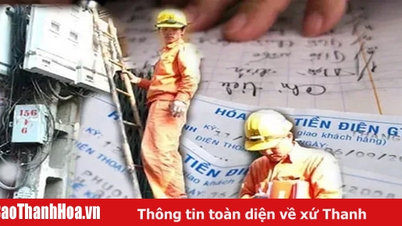













![[Photo] General Secretary To Lam meets with Chairman of the Federation Council, Parliament of the Russian Federation](https://vphoto.vietnam.vn/thumb/1200x675/vietnam/resource/IMAGE/2025/5/10/2c37f1980bdc48c4a04ca24b5f544b33)
![[Photo] Ho Chi Minh City: Many people release flower lanterns to celebrate Buddha's Birthday](https://vphoto.vietnam.vn/thumb/1200x675/vietnam/resource/IMAGE/2025/5/10/5d57dc648c0f46ffa3b22a3e6e3eac3e)
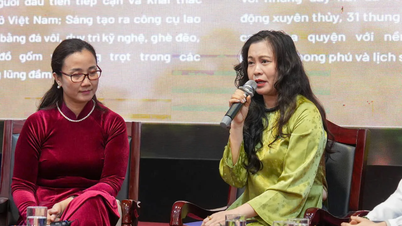





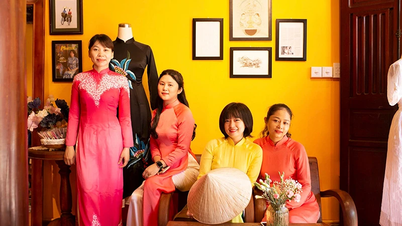


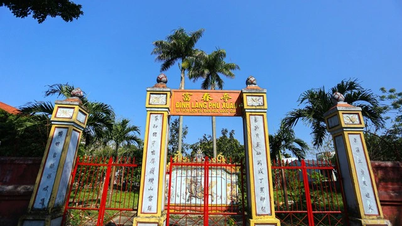









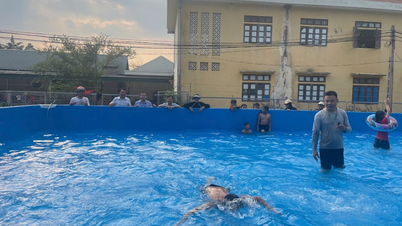









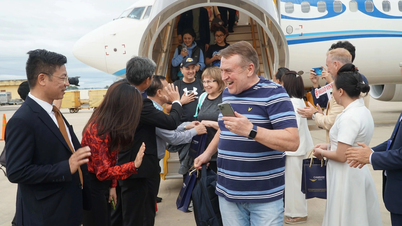



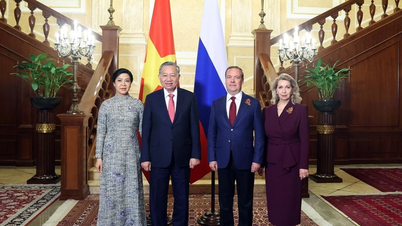





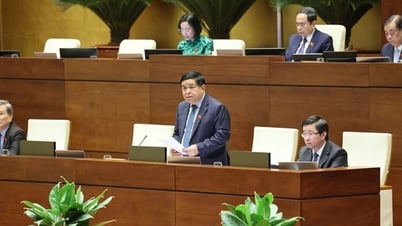

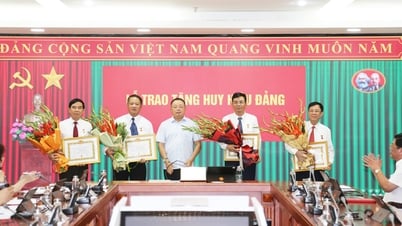
























Comment (0)